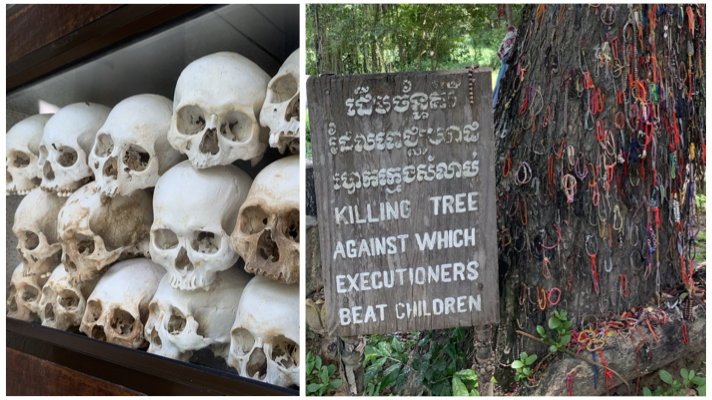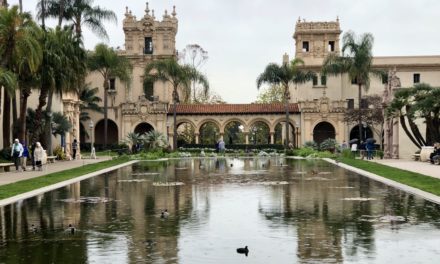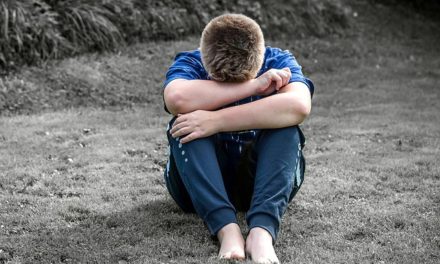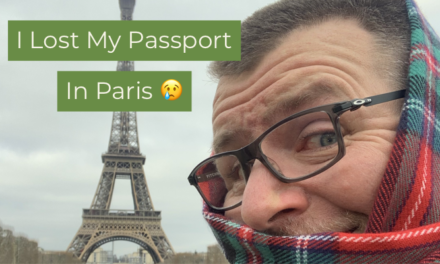Recently I was in Cambodia training leaders about three hours outside Phnom Penh. The plan was to head back to Phnom Penh on Friday, but we finished up training on a Thursday and our ride was heading back into town…and so we made the easy decision to flex our plans 🙂
Our international flights were not until late Friday night, and so all of a sudden we found ourselves with a day in Phnom Penh that we were not planning on. The guy we were with that lives in Cambodia suggested that we take some time to visit the Choeung Ek Genocidal Center which is a memorial site to the killing fields that ensued during the Democratic Kampuchea (Khmer Rouge) regime headed by Pol Pot from 1975-1979 and resulted in the deaths of 1.5-2 million people. This equates to roughly 25% of Cambodia’s population. Because of the geopolitical instability of the region during these years, it created an information vacuum that in many ways allowed this genocide to be carried out without making headlines in the news. The mass bombing by the United States in Cambodia in the early 1970’s also created an environment ripe for Pol Pot to seize power and recruit people to his cause of living out Marxist ideology of a self-sufficient agrarian society free from outside international influences.
We decided to go to the memorial in the morning. It was an easy ride from our hotel to the memorial with the Grab App (for much of Southeast Asia, Grab is the ride-sharing app that seems more popular. You have the option to use an attached credit card, or pay with cash). There are a couple of things to keep in mind when visiting the memorial:
- Modesty is a high value at this memorial. They have a sign posted that women must not wear shorts when visiting the memorial, and also smoking is not allowed at the memorial. There are two places at the site where you are expected to take off your shoes.
- The audio tour is a must! It takes about 1 1/2-2 hours to get through the audio tour, based on how deep you want to dive into the extra content that is marked as “optional” in the guide. I strongly suggest that you build in time for the optional content. It gives a greater emotional context to the site. The total admission cost, including the audio tour was $6 USD. Don’t let the moderate cost fool you. This site is very well done and extremely powerful.
- Like any site that commemorates a horrific event in history, be prepared to wrestle with very conflicting emotions. In the later part of the audio tour, it takes you towards a back area of the site that is more forested and has some seating that is a great area to process emotions. I found this area extremely helpful personally and also allowed me to dig into the optional content in the audio guide.
- The atrocities of the Khmer Rouge genocide included extremely horrific acts towards children. I have a deep soft spot in my heart for kids and a deep sense of justice that gets wrecked at memorial sites like this. I choose to use these deeply emotionally wrecking moments as a fuel to keep focused on what I can do globally to be a voice for the vulnerable.
Throughout your tour at the memorial, you are walking in and around a mass gravesite. Be prepared to see human remains that erosion at the site over the years continues to unearth. While it is a painful place to visit, I believe that they did an amazing job memorializing those who lost their lives in this genocide, while also creating an environment of learning for those of us that maybe never really heard much about this genocide. I often find myself at difficult places like this trying to remind myself that the only way for atrocities like to continue happening is when we dehumanize people and stay silent. The best thing we could ever ask for is that a memorial like the Killing Fields would inspire us to leverage our voice to speak up for the voiceless.
I chose not to give a step-by-step account of this memorial for two reasons. First, I think that part of the power of this site is not knowing all that you will see. Even if I were to try and give you a detailed account, it would fall short on preparing you.
The second reason is a direct result of an experience I had as we were getting ready to leave the memorial. At the end of the audio tour, you are invited to step inside the large Memorial Stupa that towers over the entire site. Housed in this massive structure are the remains of many of the victims that were buried at this specific killing field. It is an emotional and sobering place to step into, and the weight of this place towers over you.
As we were about to step off of the trail and step into the Memorial Stupa, the friend I was traveling with stopped me and had me look down at the ground beside where we had just walked by. On the ground were some human remains and clothes that had recently been unearthed by rains that are typical during this time of year. It was a sober reminder that trying to explain the tour cannot prepare you that this is a memorial that is dynamic and still speaking about the tragic loss of life. The bones that we saw on the ground represent a life that was snuffed out because someone chose to believe that they alone had the power to determine what humans had value.
Human dignity is, at its very core, the right of every human that is alive and breathes. We can choose to ignore this most basic tenet and create a system where we arbitrarily decide who has greater value, but in the end this approach always leads to a false belief that our differences divide us. I am absolutely convinced that we have the privilege of waking up each day and being reminded that it is our differences that unite us and create a human experience that is rich with meaning. It is our differences that can ignite our curiosity and cause us to engage with each other and say, “Please tell me your story!”
I will continue to do all I can to open my heart to those who don’t look like me, and are so very different than me because I believe that they hold the key to me experiencing the best that life has to offer. So please, take some time to visit the difficult and uncomfortable places. They provide us an opportunity to lean into the uncomfortable and grow in our value of life!






0 Comments